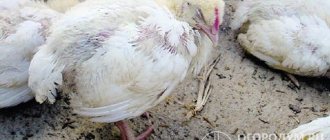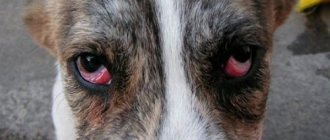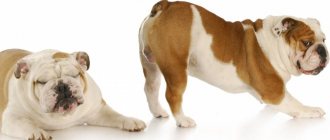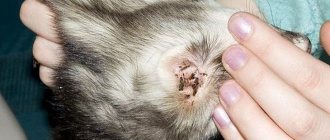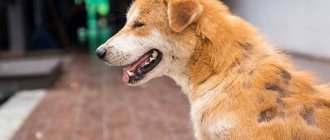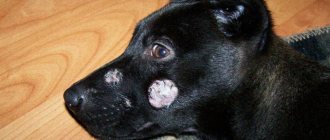Shortness of breath in a cat or dyspnea is a disorder of the breathing process, expressed in changes in the frequency, depth and rhythm of respiratory movements. It can be both physiological and pathological in nature. In the latter case, dyspnea is a symptom of serious diseases.
Due to some differences in the physiology of dogs and cats, it is quite natural for a dog to have an open mouth with a protruding tongue during extreme heat. Thus, it regulates temperature (the body cools through the evaporation of saliva from the tongue). After all, animals do not have sweat glands on their bodies.
For a cat, an open mouth is an unnatural position, and she rarely resorts to it. In most cases, this indicates that the animal has health problems. That is why the owner should show concern in response to the appearance of this symptom in his pet. Let's take a closer look at what this phenomenon is.
Types of shortness of breath
As mentioned above, shortness of breath in a cat can be physiological or pathological.
In turn, pathological shortness of breath, based on the type of breathing disorder, can be divided into the following types:
- bradypnea - slow breathing when the functions of the respiratory center are suppressed;
- tachypnea - rapid shallow breathing. This is a characteristic symptom of fever, as well as anemia and other blood diseases.
In addition, there are several forms of shortness of breath, depending on which phase of breathing is disturbed:
- inspiratory dyspnea - the inspiratory phase is disrupted;
- expiratory shortness of breath - the expiratory phase is disturbed;
- mixed shortness of breath - both inhalation and exhalation are complicated.
First aid
In addition to the above private signs, the cat owner’s anxiety and concern should be caused by the following symptoms, common to all conditions that threaten the pet’s life:
- the cat is apathetic and lethargic;
- frequent vomiting;
- cough is dry or with bloody sputum;
- the cat shows signs of anxiety and fear.
If these symptoms are present in addition to difficulty breathing, the most effective help for your pet will be to take him to the clinic as soon as possible or call a doctor at home. During transportation or while waiting for help, the cat should be placed on its side and, if possible, its mobility should be limited.
It should be remembered that you cannot hesitate and waste time. Prolonged hypoxia entails irreversible changes in the brain, which will lead to the death of the pet.
Physiological dyspnea
Shortness of breath is almost always a sign of oxygen starvation of the body, which arises for various reasons.
Physiological shortness of breath does not require treatment. It represents the body’s reaction to certain unfavorable factors or extreme conditions. After their action ceases, the cat's breathing gradually becomes calm.
Causes
Physiological shortness of breath is characteristic of:
- severe stress;
- chest injury;
- heavy physical activity;
- overheating of the body.
Stressful conditions
During stressful conditions, the hormone adrenaline is automatically released into the blood, which has the ability to stimulate cardiac activity. The body's need for oxygen increases sharply. To compensate for this deficiency, the cat actively breathes with its open mouth.
Chest injury
Shortness of breath during chest injury is a normal physiological response of the body to pain. If the chest is bruised or the ribs are broken, deep breathing becomes impossible, as it can cause pain to the cat. In such situations, rapid shallow breathing through the mouth is observed.
Great physical activity
During fast running, hunting and games, cardiac activity is stimulated. Active blood circulation automatically leads to accelerated burning of oxygen. The animal stimulates gas exchange in the lungs, increasing the number of breathing movements.
But if the cat is overweight, then even a small load will be accompanied by pathological shortness of breath. After all, obesity in a cat is a disease. A heart covered with a layer of fat is unable to cope even with a moderate load. This situation needs to be corrected urgently.
Overheating of the body
During the heat, the cat overheats, which is why “dog” breathing can be observed - rapid, with an open mouth and a protruding tongue. A cat, like a dog, does not have sweat glands on its body. The sticking out tongue helps her to further cool her body.
Symptoms of physiological shortness of breath
Physiological shortness of breath may be accompanied by behavioral characteristics of the animal characteristic of a particular situation:
- active games and physical activity, overheating of the body - increased thirst;
- prolonged exposure to the sun - lethargy, an attempt to lie on a damp surface, hide in the shade;
- stress - fear, dilated pupils, anxiety, tossing.
How to help a cat
In case of physiological shortness of breath, the animal, first of all, is given complete rest, relieved of stress, protected from bright sun, and provided with a sufficient amount of drink.
Diagnostics
Having studied the external symptoms of cough, we proceed to diagnosis:
- conduct an external examination of the body, listen for wheezing and noises;
- evaluate cardiac activity;
- take blood for analysis;
- do an X-ray examination of the sternum;
- a culture of secretions or sputum is collected to identify the causative agent of inflammation;
- examine the affected organ for oncology (if suspected).
In clinics, it is possible to examine the entire animal’s body by different specialists and conduct an X-ray examination with a contrast agent.
Pathological shortness of breath
Pathological shortness of breath is a sign of many quite dangerous ailments. If rapid breathing is not associated with external factors and appears regularly, there is no need to postpone a visit to the doctor.
Symptoms of pathological shortness of breath
The main symptoms of pathological shortness of breath are:
- difficulty inhaling, exhaling, breathing too often or too rarely;
- the animal adopts a posture of lack of air (the cat sits on half-bent legs with its head down and its mouth open);
- hoarse breathing;
- cyanosis of the mucous membranes of the lips, tongue, nose (evidence of hypoxia).
Main reasons
Pathological shortness of breath in a cat has various causes. They depend on which body system is affected. Basically, breathing problems can occur due to:
- diseases of the respiratory system;
- diseases of the cardiovascular system;
- diseases of the central nervous system;
- diseases of the hematopoietic system.
Respiratory system diseases
They can be divided into two types:
- Upper respiratory tract diseases. Shortness of breath occurs when the airways are blocked by mucous secretions due to sinusitis, rhinitis, and allergic reactions. The cause may also be nasal polyps or foreign bodies stuck in the respiratory canals.
- Diseases of the lower respiratory tract. Severe forms of pneumonia lead to filling of the alveolar spaces with purulent exudate. In this case, shortness of breath is accompanied by severe intoxication and high fever. Asthma attacks are characterized by their frequency and are caused by exposure to allergens - asthmatic pathogens in the allergic mood of the body.
Diseases of the cardiovascular system
The most common cardiovascular disease is hypertrophic cardiomyopathy in cats. The walls of the myocardium thicken, simultaneously reducing the size of the heart chambers. In this regard, blood flow is disrupted, which causes the development of hypoxia. Due to the mild symptoms, the disease is often diagnosed only at a late, life-threatening stage.
Noting lethargy, blueness of the mucous membranes, and increased drowsiness of the animal, an attentive owner should be wary. Particular concern should be caused by the fact that a cat of normal build breathes with an open mouth after running or playing. This is a clear indication of poor heart function. The animal must be shown to a veterinarian as soon as possible.
Diseases of the central nervous system
Shortness of breath may be a symptom of a cat's brain tumor affecting the respiratory center. Such pathologies are usually accompanied by coordination problems, dizziness, and vomiting. Such conditions are characterized by slow breathing - bradypnea.
Disease of the hematopoietic system
Severe anemia in cats—a critically low hemoglobin content in the blood—leads to shortness of breath. This disease is characterized by drowsiness, lethargy, cold extremities, metallic odor of saliva, and muscle weakness.
Diagnosis of the disease
A pet with pathological shortness of breath should definitely be shown to a doctor. The diseases of which it is a symptom are usually classified as severe and cannot be cured with home remedies.
After interviewing the owner and auscultating (listening) to the animal’s breathing and heart sounds, the doctor prescribes a set of diagnostic measures, the main ones being chest x-ray, laboratory blood tests, and echocardiogram. If a brain pathology is suspected, an MRI or CT scan of the head should be done.
Treatment options
Since shortness of breath is not an independent disease, but a symptom, treatment should be aimed at eliminating the cause of dyspnea. The doctor selects his tactics based on the diagnostic results.
In case of actively progressing respiratory failure, preliminary therapy should be carried out to improve the general condition of the pet. He is placed in an oxygen chamber, and in severe cases artificial ventilation is started.
The main treatment measures are as follows:
- In case of pathologies of the upper or lower respiratory tract, the following are prescribed according to indications: bronchodilators, anti-inflammatory drugs, broad-spectrum antibiotics. If the reason is the presence of a foreign body in the respiratory tract, then the animal is prepared for surgery to remove it. An asthma attack can be controlled with special medications (glucocorticosteroids, bronchodilators).
- For pathologies of the cardiovascular system, treatment is prescribed based on the results of the examination. Cardiomyopathy requires the use of beta blockers, calcium channel blockers, and diuretics.
- Pathologies of the central nervous system. If a diagnosis is made of a brain tumor, then the cat begins to be prepared for surgery, and in the meantime a course of chemotherapy or radiotherapy is administered.
- Anemia must be treated with iron supplements and vitamin supplements. In severe cases, a complete blood transfusion is prescribed.
Diseases of other body systems that cause wheezing and coughing
Read also: What do people bring to housewarming parties?
Worm infestation is one of the most common reasons why a cat develops such symptoms. The danger for cats is posed not only by parasites that live in the gastrointestinal tract, but also by worms that infect the lungs. The cause of cough can be Toxocara larvae that settle in the bronchi, adult nematodes and trematodes, which are the causative agents of many dangerous diseases.
In addition to coughing, helminthic infestations are accompanied by a decrease in the pet’s body weight, despite the fact that it demonstrates an increased appetite. Against the background of the disease, the cat’s fur also becomes dull, dandruff appears, and it often vomits.
Hoarse breathing and obsessive cough can develop against the background of heart problems, in particular valve dysfunction. With this disease, the volume of the heart muscle increases, which begins to put pressure on the trachea. This causes attacks of uterine cough, which worsens over time.
General preventive recommendations
Since there can be many causes of respiratory problems in cats, preventive measures boil down to maintaining the good physical condition of the animal. If the body has high resistance, the cat gets sick much less often and becomes more resilient. In addition, the cat is less likely to develop any hereditary diseases.
It is necessary to ensure that the animal does not overheat in the summer, do not overload it beyond measure, and do not overfeed it. It is very good if, from childhood, the kitten is surrounded by a calm, friendly environment.
How to provide first aid to a choking pet
First aid methods depend on the cause of the illness. In case of short-term disturbance, breathing often normalizes on its own, but in case of long-term disturbance, followed by cardiac arrest, the animal may require artificial respiration and indirect massage.
Basic steps
For physiological reasons, the pet simply needs to be given time to catch its breath and calm down. If overheating is to blame, be sure to offer a bowl of water and cool the areas where large vessels pass (neck, inner thighs, groin) with a cold compress. It is also recommended to open all doors and windows to create a draft.
If the cat is breathing heavily and wheezing, carefully examine his throat and check the integrity of the ribs. If you find a foreign body or injury, go to the veterinary clinic immediately. Self-help can result in accidentally pushing the found bone or other object even deeper, so it’s better not to take risks here.
Thus, the main actions are limited to normalizing body temperature, ventilating the room and calming the animal. The only exception is sudden cardiac arrest, as well as poisoning, provided its cause is known.
Is it possible to do artificial respiration?
If a cat loses consciousness and does not respond to light, then it requires urgent resuscitation. The rescue operation must begin within 2-3 minutes after the heart has stopped. In such a critical situation, it is very important not to panic, immediately call a veterinarian at home, and then strictly follow the following algorithm:
- Place the animal on its right side and extend its neck in line with the body. This will facilitate air flow.
- Clean the oral cavity from accumulated secretions with a napkin or gauze and close the mouth tightly. Removing mucus will help your pet avoid choking once breathing returns to normal.
- Inhale more air, place your curled palm on the cat’s nose and gently exhale into his nostrils. The frequency of inhalations depends on the size of the animal. With average settings, 20 times per minute is enough. The kitten will need more frequent but less intense repetitions.
- Check your pulse every 20 seconds. When breathing stops, the heart temporarily continues its work, so indirect massage is not required in all cases. If the heartbeat has really stopped, move on to the next step.
- Place one hand on the cat's chest, holding it between the thumb and the other four fingers.
- Perform several quick and rhythmic pressing movements with a break of 5 seconds, remembering to alternate them with artificial respiration. For every 30 movements there should be 2 breaths.
If possible, the rescue operation is best carried out in pairs. Once the heartbeat resumes, the animal cannot be moved, so at this point you just need to wait for the veterinarian.
When should I worry?
Your cat's wheezing breathing is nothing to worry about. However, it is important to consult a veterinarian to determine the cause of this condition and provide treatment if necessary.
If you see any of the following symptoms along with wheezing, contact your veterinarian immediately.
- Having difficulty catching my breath
- Cough or choking
- Very pale or bluish gums
- Dripping/collection of mucus in the mouth
- Signs of distress (asthma attack)
- Prolonged wheezing
- Very lethargic
Tags
if a cat coughs a panting cat in a cat licking fur, this is a cat before If a cat is not an adult cat can If a cat is in a hurry about a dog about a dog Dog breeds Dog health Dog nutrition Dog training Dog health behind a dog Why is a dog afraid of Dogs in cats. cat deaths occur in cats and Cat breeds Cat health Cat nutrition Cat behavior Health cats in cats and in cats and
dogbreedrodentsarticlerespiratoryservicesopen questioncontentsurgeonanswervaccinationbirddepartment
Diagnostic measures
To identify the reason why a cat has rapid breathing and heartbeat, the veterinarian asks the owner about possible antecedent factors, conducts a visual examination and prescribes diagnostic methods, such as:
Tonometry can help identify the cause of this symptom in a fluffy.
- X-ray of the sternum;
- electro- or echocardiogram;
- listening to the heart and lungs with a phonendoscope;
- pressure measurement;
- general blood analysis;
- bronchoscopy;
- stool analysis if helminths are suspected;
- puncture of fluid from the pleural area if necessary.
Respiratory process of a cat
A cat's breathing directly depends on its physical and psychological state. A healthy cat does not wheeze, breathes evenly, calmly, and inaudibly. If problems arise, she is unable to draw air into her lungs and her sighs become intermittent, as if coming from the “stomach.” There are a number of factors that influence the frequency of the process, in which there is no point in worrying too much:
- Stress due to rage, fear, joyful excitement - the frequency increases for a short time.
- Often a kitten wheezes when breathing if it has swallowed its own fur.
Also, do not forget why a kitten wheezes when breathing when he falls asleep soundly. This indicates complete relaxation. At the same time, his pulse and heart beats many times faster than that of an adult.
Why is a cat breathing heavily and frequently: non-dangerous reasons
Tachypnea, or rapid, heavy breathing, occurs in a cat when there is a lack of oxygen, or hypoxia. This condition is explained by 2 reasons: physiological and pathological.
Physiological causes are not life-threatening. These include various external and internal factors:
- Heat. A pet can overheat outside on a hot day or in a stuffy room with poor ventilation.
- Eating food quickly. Characteristic in the absence of saturation and prolonged fasting. Due to the too rapid absorption of food, breaths are taken in fits and starts, so the oxygen supplied with them is not enough.
- Fatigue after high physical activity. When performing intense movements, muscles require more oxygen, which is why shortness of breath often occurs while running.
- Overexcitement due to fear or aggression. In a state of stress, the body actively produces adrenaline, which speeds up the heart and the frequency of breathing. After calming down, the alarming symptoms disappear on their own.
- Hormonal changes. Occurs during estrus, pregnancy and childbirth. Treatment in these cases is not required, provided that the rest of the condition remains normal.
The risk group includes older cats and overweight cats. They get tired faster and often suffer from obesity due to inactivity.
Heart problems
Many people do not know what to do if a cat coughs and wheezes, for what reason this reflex occurs. A serious reason to see a doctor is the occurrence of heart problems. Most often, this disease occurs in old and overweight animals. At first, coughing rarely bothers the animal, but later it inevitably becomes more frequent.
The disease is diagnosed by tactile and visual examination. The pet's blood pressure is measured, electrocardiography and radiography are performed. Such a disease requires lifelong care for the animal and maintenance therapy. Treatment is prescribed by a veterinarian based on the research results obtained. Giving medications at your own discretion is strictly prohibited.
The cat must be provided with rest, proper nutrition and follow the doctor's instructions. For animals with this pathology, special dietary foods are sold in pharmacies.
Helping a cat with choking
If your cat is choking, you should see a veterinarian as soon as possible. If it is not possible to show the animal to a specialist, try to quickly remove the object from the animal’s throat/mouth yourself (except for needles and sharp objects - only a veterinarian can remove them!). Be careful and attentive, as in this state the cat experiences panic and may become aggressive.
Secure your pet and place the index finger and thumb of one hand on his upper lip, pressing it against his jaw. With your other hand, open the cat's mouth. Gently pull on the tongue to examine the throat and mouth. Try removing the foreign object with tweezers. If something is stuck in the throat or esophagus, you can remove it by inducing vomiting in the cat (only if the animal has swallowed a non-sharp object!). Give him a teaspoon of water salted with ¼ teaspoon salt.
Vaseline oil will help you deal with a small foreign object (a blade of grass, a hair): pour 1 teaspoon of this liquid into the cat’s mouth. Vegetable oil can help remove a foreign object or at least move it into the stomach (give the cat 2-3 teaspoons).
If none of the above methods help, try the following: spread your legs wide, turn the cat upside down and shake vigorously. If there is no positive result, place the pet on its side, place your palms on the sides of its body behind the last ribs. Press sharply on the sides with your hands several times - the object should jump out of the animal’s mouth.
How to provide help at home?
With rhinotracheitis, cats do not stay in the clinic, but are sent home with the owner. To prevent your pet’s condition from worsening, carefully follow all the veterinarian’s recommendations. Under no circumstances treat a cat’s cough with “human” drugs to thin the sputum - this is very dangerous for the pet’s health.
In cases where a cat's eyes are affected by rhinotracheitis, it is prohibited to use any drops!
At home, it is necessary to provide the animal with:
- drinking plenty of water,
- balanced high-calorie diet,
- a cozy and warm place to relax,
- peace and quiet.
If the cat completely refuses to eat, then contact the veterinarian again - this is necessary to put on an IV and avoid the development of complications.
Diagnosis of respiratory organs
Diagnostic methods in the clinic are aimed at identifying the causes of choking, coughing and shortness of breath and consist of:
- collecting anamnesis (finding out medical history). At this moment, the main role is assigned to the cat's owner. It is he who must tell about the signs, frequency, rhythm, strength of cough and shortness of breath, how long ago the first case was recorded, whether there is discharge and what other signs were recorded in the animal; • examination and palpation (oral and nasal cavity, trachea and esophagus, thoracic cells for integrity);
- auscultation (listening) of the bronchi and lungs;
- thermometry;
- if necessary, chest X-ray examination;
- performing endoscopy of the trachea;
- carrying out bacterial culture of nasal secretions for subtitration of microflora sensitivity to antibiotics;
- general blood analysis;
- blood chemistry;
- ultrasound examination of the chest cavity;
- analysis of fecal matter for worm eggs;
- thoracentesis (taking the contents of the chest cavity for examination).
Of all the listed diagnostic methods at home, you can carry out inspection, palpation, thermometry and auscultation. Often these methods are not sufficient to establish a diagnosis and prescribe treatment.
Carbon monoxide poisoning
This type of poisoning can be provoked by prolonged stay in places where cars accumulate, near highways, highways, in parking lots, in garages when the car engine is warming up, in cramped rooms with low oxygen concentrations, in case of gross violations of the operation of stoves in baths and saunas and, of course, in case of fires and major fires.
Signs of CO Poisoning
Blue complexion, loss of consciousness. In severe poisonings, deaths are common due to respiratory arrest and cardiac arrest.
Symptoms
- dizziness and headache
- active lacrimation or pain in the eyes
- nausea and vomiting
- dry, persistent cough and chest pain
- shortness of breath
Reactions to a high concentration of carbon monoxide in the lungs can be different, including visual and auditory hallucinations, rapid heartbeat, redness of the skin, involuntary urination and defecation, severe convulsions, and the victim’s reaction to light decreases. The danger lies in the appearance of an increasing drowsiness and the onset of complete motor paralysis, followed by the development of coma.
In the future, with complications of coma, cerebrovascular accident, visual impairment, and cerebral edema may occur. Possible skin lesions in the form of blisters and subsequent death of skin cells due to necrosis, the development of pneumonia.
First aid for gas poisoning
The very first thing to do is provide the victim with fresh air. Take him outside and lay him on his back. Allow him to breathe freely; if his chest is constrained by clothing, you need to remove it. It is imperative to ensure that the victim is breathing and that they are able to breathe on their own. If breathing is not heard or is barely noticeable, artificial respiration is necessary.
To eliminate the negative effects of inhaling carbon monoxide vapor, you can give the victim a cotton swab to sniff and thoroughly rub his body.
To avoid negative consequences and complications of the nervous and respiratory systems, you need to take the person to the nearest medical center. It is worth noting that the sooner you take the victim to the hospital, the better. This is necessary to ensure that oxygen therapy can be used as quickly as possible, since clean air is crucial for it.
With mild carbon monoxide poisoning, nausea may occur, but you can easily cope with it with a 0.5% solution of novocaine inside the body. Strong tea or coffee will help.
